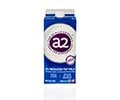Burosumab-twza Medication Information
Discover comprehensive details about Burosumab-twza, including its pronunciation, uses, dosage instructions, indications, and guidelines on how and when to take it or avoid it.
The updated prescription information covers potential side effects, precautions, warnings, and storage recommendations.
Additionally, explore the Burosumab-twza brands available in India and internationally, along with pricing information. For personalized advice, consult your healthcare provider.
Generic Name : Burosumab-twza Pronunciation : bur-oh-sue-mab-twza Therapeutic Classification : Monoclonal antibodiesBrand Names or Trade Names of Burosumab-twza
India :
Crysvita
Overview of Burosumab-twza
Burosumab-twza or KRN23 is a monoclonal antibody approved by FDA on April 2018 to use as an injection for subcutaneous use in patients with X-linked hypophosphatemia.Why is Burosumab-twza Prescribed? (Indications)
Burosumab-twza or KRN23 is a monoclonal antibody prescribed to treat a rare hereditary disorder called X-linked hypophosphatemia (low levels of phosphate in the blood) in adult and pediatric patients who are one year and above. It has been successfully tested in children with X-linked hypophosphatemic rickets.Use of burosumab-twza can be confirmed by the radiographic evidence of bone disease.
Burosumab-twza works by blocking the activity of FGF23 protein resulting in reabsorption of phosphate by the kidneys and thereby restoring the phosphate levels in the blood.
When should Burosumab-twza not be taken? (Contraindications)
Burosumab-twza should not be used in patients with-• Allergy to burosumab-twza
• Taking oral phosphate and vitamin D medications
• Normal or high phosphorus level in the blood
• Infants less than one year
• End-stage kidney disease
Caution is required while using burosumab-twza in pregnancy and breastfeeding mothers.
What is the dosage of Burosumab-twza?
• The dose is recommended based on the patient’s phosphate level in blood and the individual body weight.• The minimum dose is 10 mg, and the maximum dose is 90 mg
Patients aged from 1 year to 18 years:
The initial dose is 0.8 mg/kg of body weight given every two weeks
Patients aged above 18 years:
The recommended adult dose is 1 mg/kg of body weight given for every four weeks
• Fasting serum phosphorus level should be examined every month during first three months of burosumab-twza and treatment should be continued with the same dose if the phosphorus level is within the normal range.
• The dose can be adjusted based on the serum phosphorus level but never more frequently than every four weeks.
• If a dose is missed, take the missed dose as soon as it is remembered.
How should Burosumab-twza be taken?
• Burosumab-twza is available in injection form to be given as subcutaneous or just under the skin which should be administered by a healthcare provider.• Stop taking oral phosphate or vitamin D supplements at least 1 week before starting the treatment with burosumab-twza.
What are the warnings and precautions for Burosumab-twza?
• Injection sites should be rotated after each injection. The most common injection sites are buttocks, upper thighs, any quadrant of the abdomen or upper arm.• Never inject into tender, red, bruised or hard skin. Also, avoid injecting into moles or scars.
• Discontinue the treatment if severe injection site reactions such as pain, swelling, itching or irritation at the injection site occur.
• The injection should be inspected for the presence of any particulate matter, discoloration or cloudy appearance and should be discarded if such occur.
• Patients should be monitored for the presence of any allergic reactions and the treatment with burosumab-twza should be discontinued during such serious episodes.
• Phosphorus levels should be monitored regularly to avoid the risk of nephrocalcinosis
• (a condition of calcium deposition in the kidneys).
• Consult the physician immediately if a new or worsening of the existing restless legs syndrome is reported.
What are the side effects of Burosumab-twza?
• Headache• Injection site reactions
• Vomiting
• Pain in the extremities
• Rashes
• Muscle pain
• Restless leg syndrome
• Fever
• Toothache or tooth abscess
• Low levels of vitamin D
• High phosphorus levels in the blood
• Dizziness
What are the other precautions for Burosumab-twza?
• Patients should be monitored for the level of parathyroid hormone regularly as there will be an increase in the hormone levels during treatment with burosumab-twza• Dizziness may occur following burosumab-twza administration and activities involving driving or operating heavy machinery should be avoided as it may impair mental alertness.
• Injections should be allowed to come to room temperature before administering.
What are the Drug Interactions of Burosumab-twza?
• Taking burosumab-twza with vitamin D or oral phosphate supplements leads to a risk of hypercalcemia or hyperphosphatemia and hence should be avoided.• The physician should be informed if a patient is taking any prescription, non-prescription medicines or any herbal supplements.
What are the storage conditions for Burosumab-twza?
• Store burosumab-twza injection in a refrigerator at 2°C to 8°C but do not freeze or shake the vial.• Protect the injection from light by keeping it in its original package.
 MEDINDIA
MEDINDIA
 Email
Email









